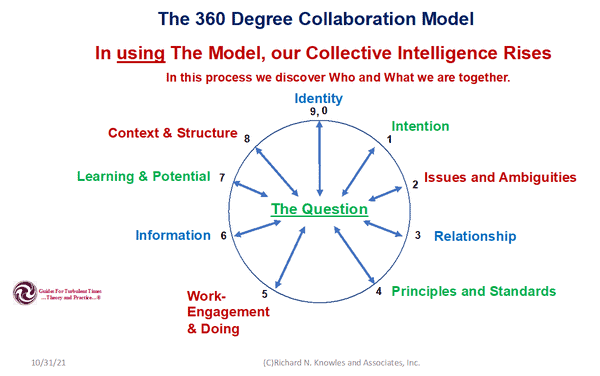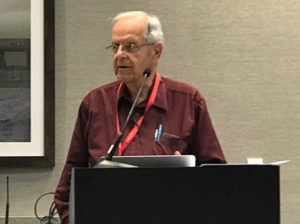When we are asked to come into an organization to help them improve their safety performance, we do not work on safety in the traditional sense.
We work with them to identify an important, complex problem they want to solve. It needs to be a problem that everyone thinks they know about and wants to solve. While the stated problem is something like, “How do we improve our total safety performance?,” their problems are usually much deeper than this surface level. We help the people to find the deeper problem that is driving a lot of their poor safety performance.

We then gather a group of people together from across the organization, from the top management to people on the floor, and have a focused conversation about their problems. Our workshops usually last 1-2 days, depending on the size of the organization. As the people open up, a lot of important information emerges. Their answers are arranged around a circle (circles indicate wholeness), and they discover who and what they are as a group and how to work together in resolving this concern for the long-term.
This figure illustrates the process:

As they look at their question from these nine perspectives, the collective intelligence of the whole group rises. People often tell us that they did not know that they knew so much.
As they talk together, they discover that their main problem is in how they chose to work together which they describe when they talk about their Principles and Standards. Initially, a lot of dysfunctional behavior surfaces. They see that stuff like bullying, harassment, and lying are really causing their poor performance across the organization. It’s not just in poor safety performance. These poor behaviors contaminate all their work.
Paul Glover of the Forbes Coaches Council reported recently in LinkedIn that 48% of American workers are looking for other work because of dysfunctional behaviors like these, 70% see no reason to speak up about problems because they fear their bosses and co-workers, and only 33% are working at optimal levels. There is little psychological safety for raising and resolving problems together. Many organizations are in denial about problems like these. These dysfunctional behaviors adversely impact all aspects of the organization’s performance, and lots of people want to get out of there. Leadership, unfortunately, is in denial – often because egos are involved, or they don’t know how to turn things around. Yet it doesn’t have to be that way!
Note: This model works, when you decide it is time to make that big difference for your organization, to be intentional about the safety of your people! This model becomes your extraordinary leadership magnet for improved safety performance – because it contains all the critical elements – and because it is collaborative, alignment and effectiveness comes quickly.
Most people want to work in organizations where everyone is working together for the good of the whole. Leaders are seeking better ways for embracing safety. People want to be proud of their place of work and feel good about it. So, in our workshops we help the people to tap into this way of working and everything gets better, quickly. For example, we have seen the safety performance change for the better the very next day. When people decide that they want to change, they do it.
 I feel we are not moving fast enough to get to higher levels of performance. Way too many people are getting hurt and killed. Safety is a part of all we are doing and the whole system needs to be making improvements.
I feel we are not moving fast enough to get to higher levels of performance. Way too many people are getting hurt and killed. Safety is a part of all we are doing and the whole system needs to be making improvements. I was given the opportunity to talk about my work on Partner-Centered Leadership and shared information about the Process Enneagram, which is such a powerful tool to help people to come together to solve their complex problems. Partner-Centered Leadership is focused on sharing information, building trust and interdependence, helping everyone see the importance of their work for the success of the whole enterprise and moving into a better future. Everyone at the workshop was seeking ways to actually move into Safety II and make it happen so there was a lot of interest in this work.
I was given the opportunity to talk about my work on Partner-Centered Leadership and shared information about the Process Enneagram, which is such a powerful tool to help people to come together to solve their complex problems. Partner-Centered Leadership is focused on sharing information, building trust and interdependence, helping everyone see the importance of their work for the success of the whole enterprise and moving into a better future. Everyone at the workshop was seeking ways to actually move into Safety II and make it happen so there was a lot of interest in this work.




